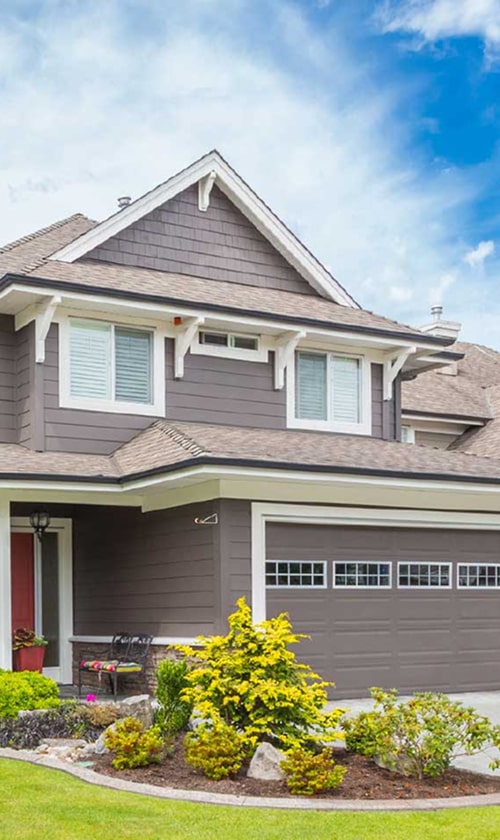Proper thermostat installation helps us save energy and lower our utility bills. Many people do not realize that where and how we place our thermostat affects how well our heating and cooling systems work. Small mistakes, like putting the device near a window or in direct sunlight, can make the system run longer than needed.
When we install a thermostat the right way, our homes maintain a more comfortable temperature. This keeps us from wasting energy and reduces wear on our HVAC equipment. With proper setup, we can manage our energy use more easily and avoid hot or cold spots throughout the house.
How Proper Thermostat Installation Enhances Energy Efficiency

When we install a thermostat correctly, we help our HVAC system work at its best. This improves how we use energy throughout our home and has a direct effect on our comfort and energy bills.
Accurate Temperature Readings and HVAC Performance
A well-installed thermostat gives accurate temperature readings in the right spot in our home. If it is too close to windows, vents, or direct sunlight, it can detect heat or cold that is not a true sign of our home’s temperature.
Placing the thermostat near drafts or heat sources can force our HVAC system to cycle on and off too often. This leads to wasted energy and puts extra strain on our heating and cooling equipment.
Correct installation helps the thermostat measure the real indoor temperature. This lets the HVAC system maintain comfort while running only as much as needed, supporting higher energy efficiency.
Reducing Unnecessary Energy Consumption
Proper installation helps us avoid common issues that drive up our energy use. When the thermostat is set up in the right place and wired correctly, it follows our preferred settings more precisely.
- Fewer Mistakes: Wrong installation can cause the system to run at the wrong times or longer than needed.
- Right Wiring: Good wiring ensures the thermostat talks clearly with our HVAC system, so it does not work harder than it should.
Less wasted energy means lower heating and cooling costs on our energy bills. We use only as much power as is truly needed to stay comfortable.
Impact on Home Comfort and Indoor Environment
The way we install our thermostat affects our comfort at home. With careful installation, the HVAC system responds to the actual needs of our space, not just a hot or cold corner.
This helps avoid hot and cold spots in rooms and keeps a steady, pleasant indoor temperature. It also means the air stays cleaner and less humid, supporting a healthier environment.
Proper installation lets us set and keep our preferred temperatures with less effort. This leads to steady comfort and helps prevent problems like mold or stale air that sometimes come from improper heating or cooling.
Optimal Thermostat Placement and Installation Techniques

Where we place our thermostat and how we install it affects both energy efficiency and our comfort indoors. Choosing the right spot helps our cooling systems work as intended while saving energy and keeping temperatures steady.
Ideal Locations for Thermostat Placement
We should install thermostats on interior walls, about four to five feet above the floor. This height helps the thermostat read the room’s actual temperature instead of hot or cold air near the floor or ceiling.
The best spot is a central location, away from vents, doors, windows, and direct sunlight. These areas prevent drafts or heat from affecting the sensor.
Key factors to check:
- Good airflow around the thermostat
- Distance from kitchens and heat-producing electronics
- Away from bathrooms, which have changing humidity
Choosing the proper location ensures the thermostat gets a true sense of the room’s average temperature and controls our HVAC system efficiently.
Placement Mistakes to Avoid
Putting thermostats too close to supply vents, return air ducts, or exterior doors is a common problem. This can cause false readings, leading to inefficient heating or cooling.
We should never install thermostats in direct sunlight. Sunlight heats the sensor, making it think the room is warmer than it is, so our air conditioner may run more than needed.
Avoid areas with high humidity, like near bathrooms or laundry rooms. Moisture can impact readings and even damage the thermostat over time.
A quick checklist:
| Mistake | Why It’s a Problem |
|---|---|
| Near vents or ducts | False temperature readings |
| In direct sunlight | Unnecessary cooling |
| Next to doors/windows | Drafts affect accuracy |
| In kitchens or near appliances | Heat skews temperatures |
Professional Installation vs. DIY Methods
We can install a thermostat ourselves, especially simple, battery-powered models. Instructions usually include clear wiring diagrams and details. However, energy-efficient thermostats with advanced features or compatibility with ventilation and cooling systems often need expert handling.
Professional installers test wiring and connections. They also check that our thermostat communicates correctly with our home’s temperature control system. This helps prevent short cycling and improves energy savings.
When dealing with smart thermostats or multiple zones, professional help reduces the risk of mistakes. It also ensures we get the best performance from our HVAC system. For basic replacements, DIY may work, but for most upgrades, expert installation is a better long-term choice.
Thermostat Types and Smart Technology Integration
Selecting the right thermostat for our home makes a large difference in energy savings. Features such as schedules, remote control, and integration with other smart home devices affect how easily we control temperature and reduce unnecessary heating or cooling.
Manual, Programmable, and Smart Thermostats
Manual thermostats require us to set the temperature by hand. They do not have memory or scheduling options, which often leads to wasted energy if we forget to adjust them.
Programmable thermostats allow us to set temperature schedules for different times of day. This helps us save energy by lowering or raising the temperature automatically when we are asleep or away from home.
Smart thermostats offer the most features. They can learn our daily routines, adjust settings automatically, and connect to Wi-Fi for remote control. Many smart thermostats also track our energy usage and provide energy reports to help us see where we can save even more.
| Type | Scheduling | Remote Control | Energy Reports |
|---|---|---|---|
| Manual | No | No | No |
| Programmable | Yes | No | No |
| Smart | Yes | Yes | Yes |
Benefits of Smart Thermostat Installation
Smart thermostat installation provides us with several advantages over older models. The most important is remote control through a phone or tablet, so we can adjust the temperature even if we are not home.
Many smart thermostats send alerts if the temperature goes outside a safe range or if there is a sudden spike in energy use. Most models show clear energy reports so we can track patterns and spot chances to save.
Learning features let smart thermostats remember our daily habits, such as when we leave for work and return, and adjust the temperature automatically. Some also use geofencing to know when we are near home and prepare the system for our arrival. This can help lower our utility bills by reducing heating or cooling when it is not needed.
Compatibility With Smart Home Devices
Smart thermostats are designed to work with many smart home devices and home automation systems. For example, we can use Google Home or Amazon Alexa to control the thermostat with simple voice commands.
Many models connect to other devices, such as smart lights or security systems, to make our home even more efficient. If our thermostat can “talk” to window sensors, it might stop heating or cooling when a window is open.
Most smart thermostats offer easy integration with home Wi-Fi networks. This means we can use apps, voice assistants, or even full home automation hubs to manage temperature, monitor energy, and create routines. Compatibility is important to make sure everything in our smart home works together smoothly.
Long-Term Energy Efficiency Benefits and Cost Savings
Proper thermostat installation leads to real reductions in energy use, saves us money over time, and is better for the environment. It also helps our heating and cooling systems last longer, lowering expensive repair or replacement costs.
Lower Utility Bills and Reduced Energy Consumption
When our thermostat is installed the right way, we can control the temperature more closely and avoid wasted energy. Settings like programmable schedules help us use less energy while we’re asleep or away from home. Small adjustments, such as lowering the heat at night, can create noticeable energy savings.
According to the U.S. Department of Energy, setting our thermostat back by 7-10 degrees for 8 hours a day can save as much as 10% a year on heating and cooling costs. That translates to lower utility bills each month without sacrificing comfort.
We can often see these savings start to add up in the first year after installation. Over time, these small cost reductions make owning and maintaining our home more affordable.
| Adjustment | Estimated Savings |
|---|---|
| 1°F setback | 1% per 8 hours/year |
| 7-10°F (8 hours/day) | Up to 10% yearly |
| Programmable or smart | Varies by use, often higher |
Environmental Impact and Sustainability
Using less energy means power plants burn less fuel, releasing fewer greenhouse gases. This helps lower our home’s carbon footprint and supports energy sustainability in our community.
With efficient thermostat settings, we reduce our demand for electricity, which is mostly made from fossil fuels. Even small cuts in energy use make a measurable difference in the amount of air pollution produced.
By playing our part in reducing energy consumption, we help limit environmental harm and protect resources for the future. Efficiency isn’t just about paying less; it’s about making choices that are good for the planet.
Extending HVAC System Lifespan
Our HVAC systems work harder when thermostats cause frequent or large temperature swings. Properly installed thermostats provide even, stable settings, which help avoid unnecessary strain on heating and cooling systems.
Fewer on-off cycles and steadier operation mean less wear and tear on parts like fans, compressors, and motors. This often leads to fewer breakdowns and delays the need for expensive repairs or system replacement.
By reducing the workload on our HVAC equipment, we not only save on repair and replacement costs but also ensure better performance and comfort in our homes. Regular maintenance plus a well-installed thermostat help us get the longest life out of our heating and cooling investments.




